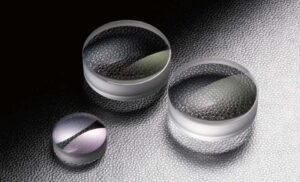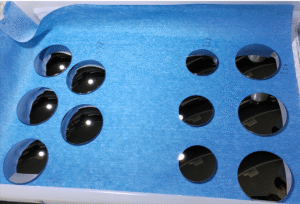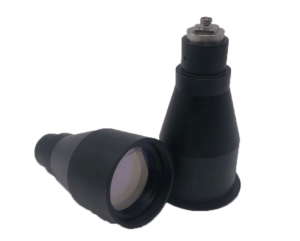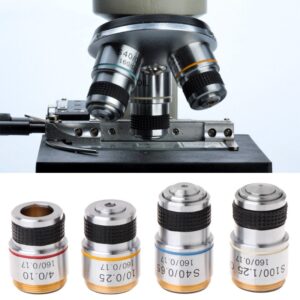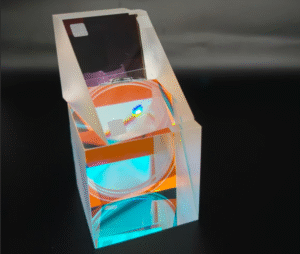What Is a Gradient Index Lens?
A Gradient Index (GRIN) lens is a unique optical component in which the refractive index changes gradually within the material, rather than remaining constant like traditional lenses. This gradient enables light rays to bend continuously within the lens, allowing for compact focusing, beam collimation, and high-resolution imaging without the need for complex curved surfaces.
At Bote Optics, we manufacture and supply high-quality GRIN lenses customized for a wide range of optical systems. Leveraging our precision processing capability in Nanjing and Singapore-based logistics, we offer reliable GRIN solutions with fast lead times and global compliance.
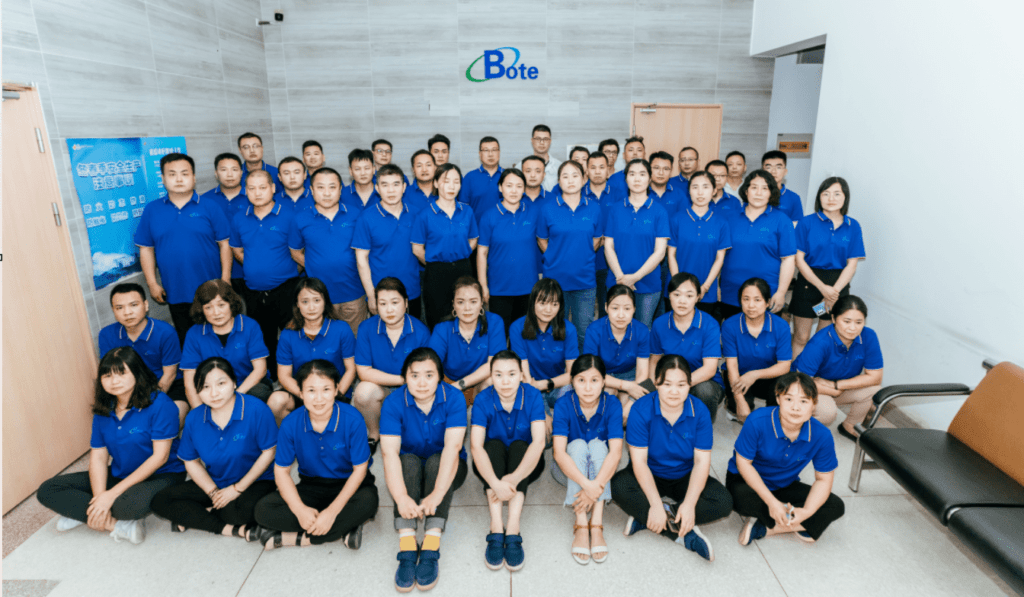
Key Features of Bote’s Gradient Index Lenses
| Feature | Specification |
|---|---|
| Material | Borosilicate, Optical Glass, or Custom |
| Gradient Profile | Radial, Axial, or Custom |
| Length | 0.5 mm to 20 mm |
| Diameter | 0.25 mm to 10 mm |
| Wavelength Range | 400 – 1600 nm (customizable) |
| Numerical Aperture (NA) | 0.1 to 0.55 |
| AR Coating | Optional (custom wavelength range) |
| Surface Finish | Polished or Anti-Reflection Coated |
| Tolerance | ±0.01 mm (length), ±0.005 mm (diameter) |
Why Choose Bote for GRIN Lenses?
✅ Full Customization
We design GRIN lenses to meet your application-specific needs. Choose your NA, length, diameter, coating, and mounting options. Perfect for OEM integration.
✅ High-Precision Manufacturing
From axial GRIN rod lenses to radial cylindrical lenses, our factory ensures tight tolerances and consistent performance.
✅ Fast International Delivery
We ship from Singapore, allowing rapid and legally compliant exports to the US, Europe, and Asia-Pacific regions.
✅ End-to-End Optical Solutions
As a complete optics provider, we offer matching windows, prisms, coatings, and lens assemblies, all backed by expert support.
Applications of Gradient Index Lenses
- Fiber Optic Communication
- Endoscopy and Medical Imaging
- Barcode Scanning Systems
- Laser Beam Collimation
- Miniature Optics and Sensors
- Microscopy and Imaging Systems
- Optical Signal Coupling
How Does a Gradient Index Lens Work?
Unlike traditional lenses that bend light using curved surfaces, a GRIN lens uses a varying refractive index profile to redirect and focus light. The gradual change in index causes light to follow a sinusoidal path, offering compact focusing without the need for bulk or complex shapes.
Advantages of GRIN Lenses vs. Traditional Lenses
| Property | GRIN Lens | Traditional Lens |
|---|---|---|
| Size | Ultra-compact | Larger form factor |
| Alignment | Easier with fiber optics | More sensitive |
| Surface Shape | Flat or slightly curved | Strongly curved |
| Focusing Method | Refractive index variation | Surface curvature |
| Cost | Lower in volume | Higher with precision shapes |
GRIN Lens Types We Offer
| Type | Description | Use Case |
|---|---|---|
| Axial GRIN Lens | Index varies along optical axis | Imaging, fiber collimation |
| Radial GRIN Lens | Index varies radially | Compact focusing, beam shaping |
| Cylindrical GRIN Lens | Gradient in one direction | Astigmatic correction |
| Fiber-Coupled GRIN Lens | Designed for fiber connectors | Optical coupling & collimation |
Standard Models Available
| Part Number | Diameter (mm) | Length (mm) | NA | Coating | Application |
|---|---|---|---|---|---|
| BOTE-GRIN-0255 | 0.25 | 5.0 | 0.46 | Uncoated | Fiber Collimation |
| BOTE-GRIN-0510 | 0.5 | 10.0 | 0.3 | AR @ 1310 nm | Medical Imaging |
| BOTE-GRIN-1015 | 1.0 | 15.0 | 0.55 | BBAR 400-700 nm | Microscopy |
| BOTE-GRIN-CUST | Custom | Custom | Custom | Custom | OEM Integration |
FAQs – Gradient Index Lenses
Q: What are gradient index lenses used for?
A: GRIN lenses are used in fiber optics, endoscopes, laser systems, and compact imaging devices where space is limited, and precise beam control is needed.
Q: Can I request a custom GRIN lens profile?
A: Yes, we support full customization including NA, diameter, length, and gradient profile (axial/radial).
Q: Do you offer GRIN lens assemblies with housings?
A: Yes. We offer mounted GRIN lenses with sleeves or stainless steel tubes for easy integration.
Q: How is quality ensured at Bote?
A: All lenses are manufactured in our ISO-compliant China factory and inspected before shipping from Singapore.
Q: What’s your lead time for GRIN lenses?
A: Standard models ship in 3–5 business days. Custom GRIN lenses typically ship within 2–3 weeks.
Why Buy GRIN Lenses from Bote Singapore?
At Bote (www.bote.com.sg), we’re more than just an optics supplier. We’re your long-term optical partner with:
- In-house design and machining for prototypes and volume orders
- Experienced optical engineering support
- Seamless export from Singapore, avoiding regulatory issues
- Competitive pricing for OEM and research customers
We specialize in custom optics, supporting short lead times, low MOQs, and end-to-end production control.
Get a Quote Today
Ready to enhance your system with high-performance gradient index lenses?
📩 Email us: [email protected]
🌐 Website: www.bote.com.sg
📞 Call us: +65-8700-3511
Whether you’re working in biomedicine, telecom, or laser optics, Bote provides the GRIN lens solution tailored to your needs.
Related Products You May Like
Conclusion
Gradient index lenses offer powerful benefits in size, simplicity, and optical performance. Whether you need fiber coupling, compact imaging, or laser collimation, Bote’s GRIN lens portfolio is designed to exceed expectations.
With precision production, global reach, and responsive customer support, Bote is your trusted source for custom GRIN lenses and beyond.
Inspection Equipment List and Metrology of Bote Optics

